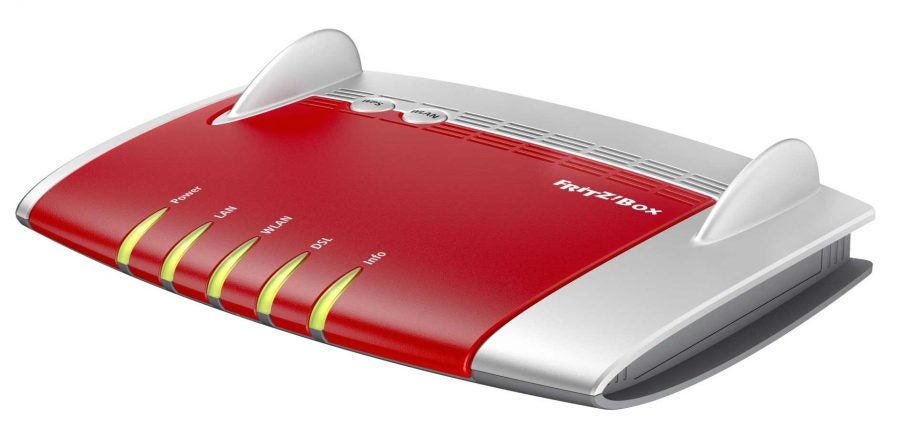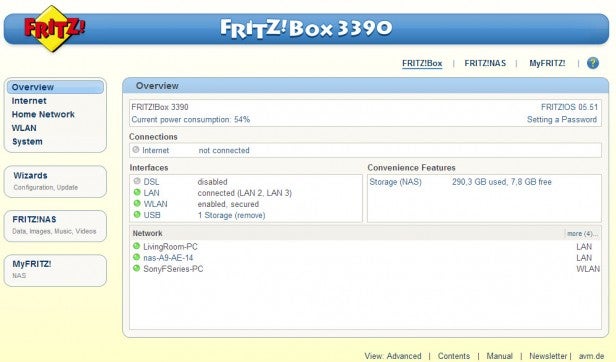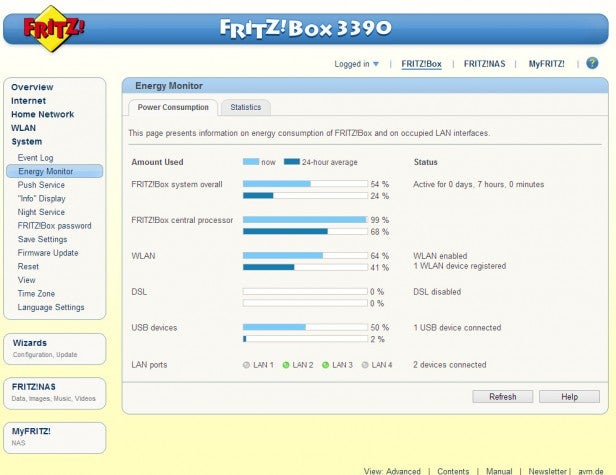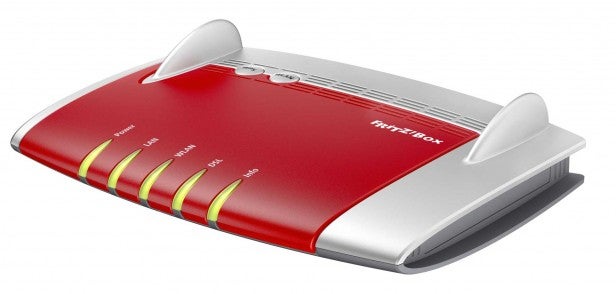AVM Fritz!Box 3390 Review - Setup, Performance & Verdict Review
Setup, Performance & Verdict
The German market leader launches a VDSL router to tackle the UK

Sections
- Page 1 AVM Fritz!Box 3390 Review
- Page 2 Setup, Performance & Verdict Review
FRITZ!Box 3390: Setup
We have gotten used to the well trodden paths of Linksys, D-Link, Netgear and others so it was interesting to see Fritz!Box take a fresh approach to getting up and running.

Like the best modern routers, the 3390’s entire setup is browser based so there’s no CD and the large round WPS button on its top means connecting to its wireless signal takes seconds. That said we did find a number of quirks such as a reboot merely after setting our language and country and extensive energy consumption settings which, while theoretically welcome, means the 3390 restricts its Ethernet ports to 10/100 rather than Gigabit by default.
We also don’t like the company’s decision to unify its 2.4GHz and 5GHz SSIDs out the box. It may keep things simple, but devices with faster 5GHz WiFi cannot choose which signal they connect to and it requires some digging around in advanced settings to change this.

On the plus side Fritz!Box has taken a methodical approach to its UI (found at fritz.com or 192.168.178.1) with clear categories for each section and an array of options that go far deeper than most rivals. The downside is this approach will scare off the less tech savvy and it isn’t as slick as the Linksys Smart WiFi cloud-based platform which still sets the industry standard.
FRITZ!Box 3390: Performance
Up to now the 3390 has proved a mixture of pros and cons, but we found its wireless performance to be reasonably good.
In our residential test environment speeds at 2m and 10m line of sight and 13m behind two standing walls 802.11n 5GHz produced speeds of 18.1MB/s (144.8Mb/s), 14.7MB/s (117.6Mb/s) and 5.63MB/s (45.05Mb/s). This paces it close to the D-Link DIR-845L, the fastest dual band wireless n router we’d reviewed to date, except at 13m where it pulls away hitting 7.1MB/s (56.8Mb/s). The 3390 is also comfortably ahead of both the Virgin new Super Hub and BT Home Hub 4.
2.4GHz performance was strong too. Its 2m, 10m and 13m speeds of 11.4MB/s (91.2Mb/s), 8.48MB (67.84Mb/s) and 4.64MB/s (37.04Mb/s) place it in the upper echelons of 802.11n 2.4GHz performance – though again just behind the DIR-845L.
USB performance was less impressive coming in at 3.2MB/s (25.6Mb/s). This is fairly mediocre and illustrates the lack of computing horsepower in current routers, which must be addressed if networked USB is going to become a viable Ethernet alternative.

Should I buy the FRITZ!Box 3390?
Coming in at £119 we’d say it depends entirely on your circumstances. The integrated VDSL modem pushes up the price significantly, but it will be worth it for those determined to have a neat single box solution and with the tech skills to comfortably negotiate the 3390’s UI (which is necessary to enable basics like Gigabit Ethernet).
If all-in-one isn’t a priority we’d steer clear. The faster (though router-only) DIR-845L can be found for less than £100 online and the £150-160 price range will get you an 802.11ac router that not only future proofs your network, but brings significantly stronger 802.11n 5GHz performance as a consequence.
How much faster? Over 20MB/s (160Mb/s) at both 2m and 10m and circa 10MB/s (80Mb/s) at 13m. Yes, it is strongly worth thinking about.
Verdict
After carving out an impressive reputation in Germany, Fritz!Box has made an compelling play for greater attention in the UK. The 3390’s wireless performance competes with the best 802.11n dual band routers, it integrates a VDSL modem and the design is both fun and distinctive. Then again out of the box setup issues and the fact it retails within touching distance of some much faster 802.11ac routers mean it just falls shy of a recommended award.
Trusted Score
Score in detail
-
Performance 8
-
Value 6
-
Features 8
-
Build Quality 6
-
Usability 6
-
Design 8

